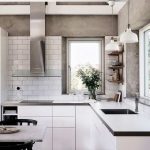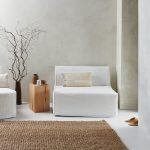Handcrafted furniture is at the heart of Will Worsp’s burgeoning business.
Project managing fit-outs for London heavyweights including Gap, H&M and Selfridges was no match for Will Worsp’s dreams of making his own furniture. And so it was that he packed it in and came home, setting up in Raglan beside the seaside as WRW & Co. His guiding principle when designing his perfectly pared-back pieces is that they be handcrafted and made from solid timber, an approach that ensures each covetable item exemplifies his signature blend of strength and beauty.
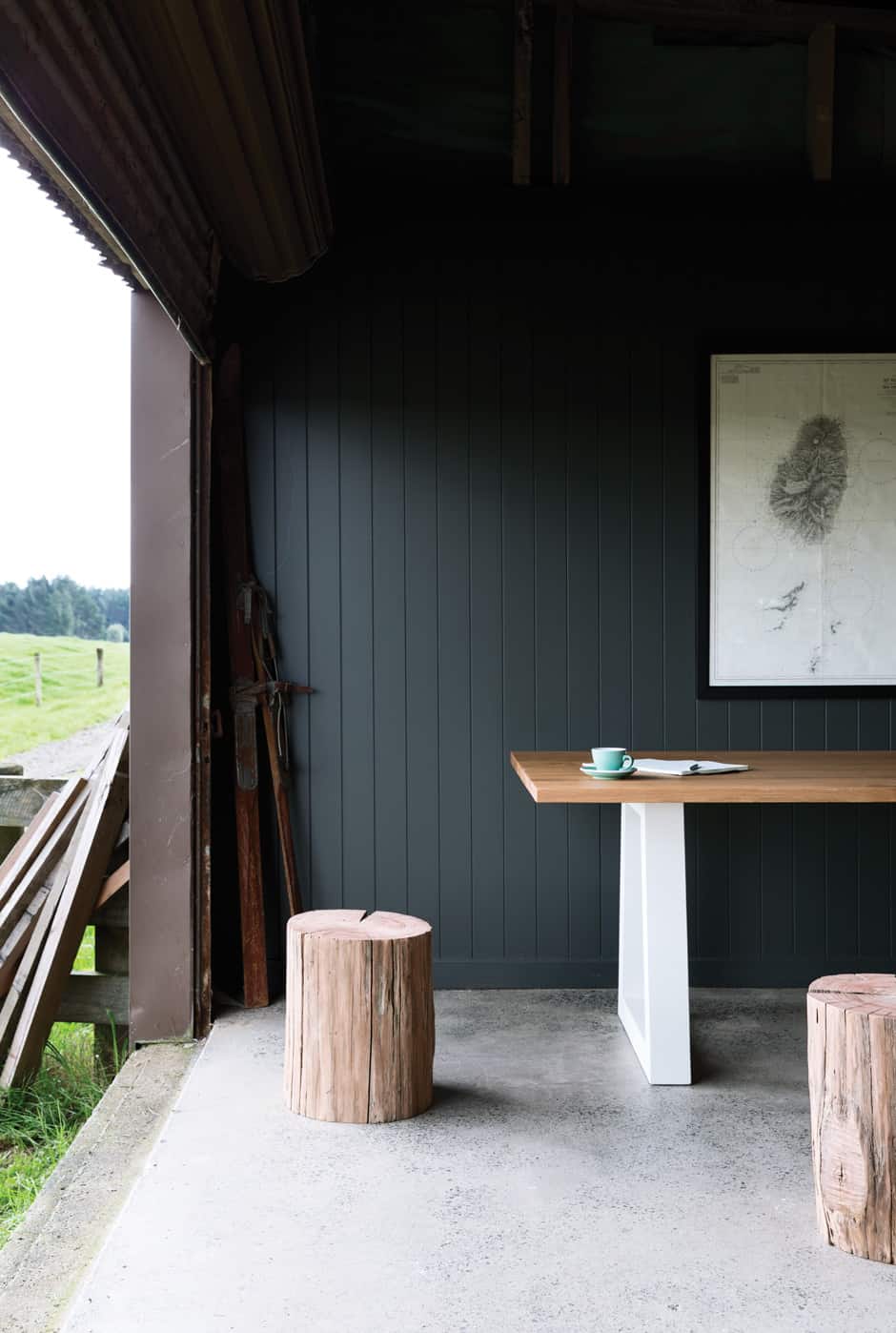
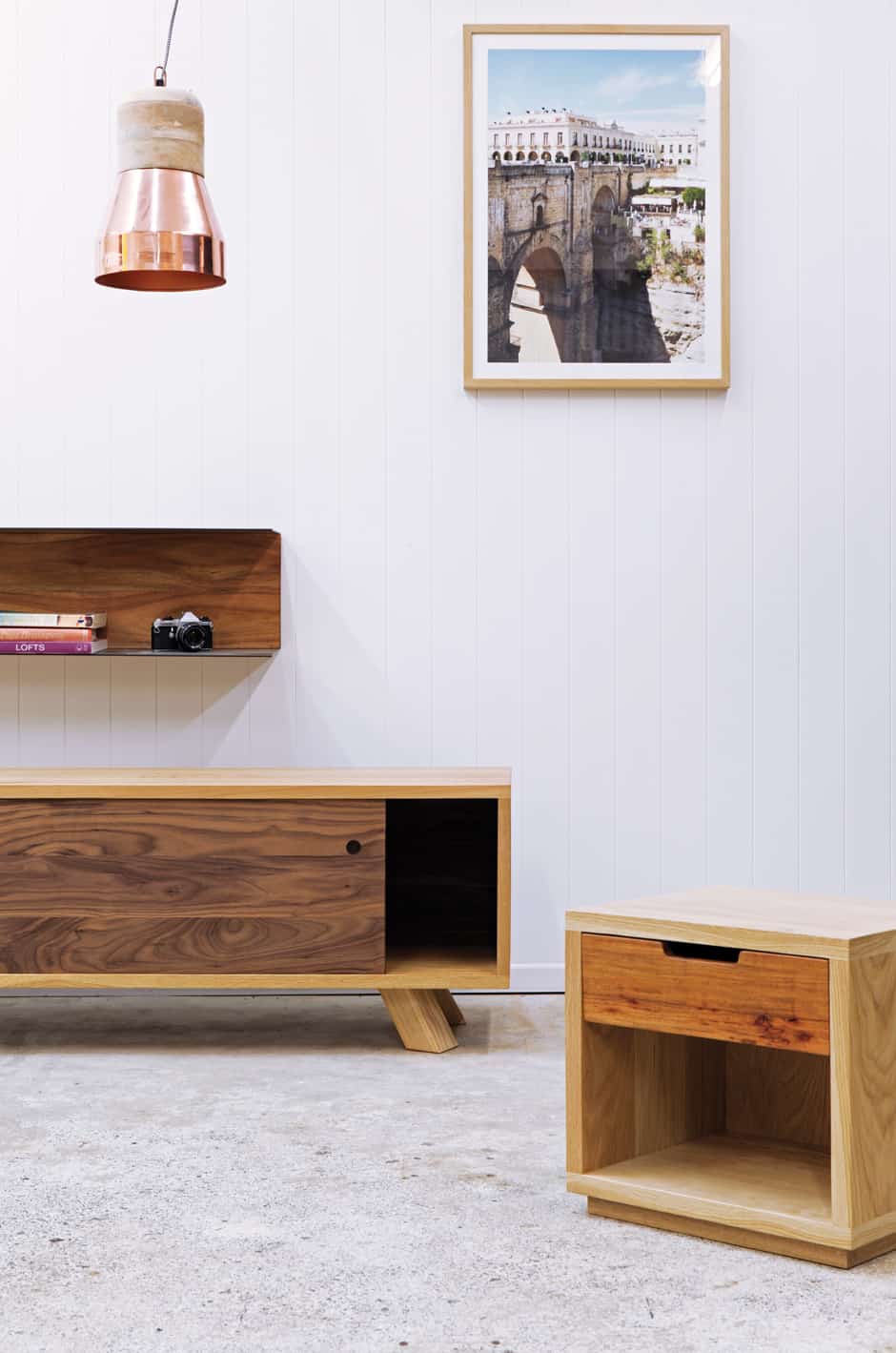
When did you start working with wood? I’ve always enjoyed making things with my hands and had a passion for wood – the way its characteristics differ from one tree to another and present themselves differently in each piece. So when I was back in New Zealand in 2010 waiting for my UK visa to come through, I decided to make one of the pieces I’d been sketching and working on for some time. I absolutely loved the process and learned a lot from it, so I decided to approach a store in Auckland, who took the piece on consignment – and almost immediately I had three orders to fill. It sowed the seed of a business idea.
Back in London, I kept dreaming of home and the countryside, and as nerdy as it sounds, I also kept dreaming about designing and making my own furniture. So I decided it was time to come home and see if I could turn my passion into a full-time business. So far, so good.
Where’s your workshop? All the furniture is made in Raglan and we now have a pop-up in Grey Lynn’s Grosvenor Street [open until the end of the year], where we’re showcasing the whole WRW collection. Having the showroom in Auckland gives me the opportunity to engage more with customers and talk through what they’d like. Interacting with a piece of furniture is an important part of the process and I really enjoy getting to know our customers better.
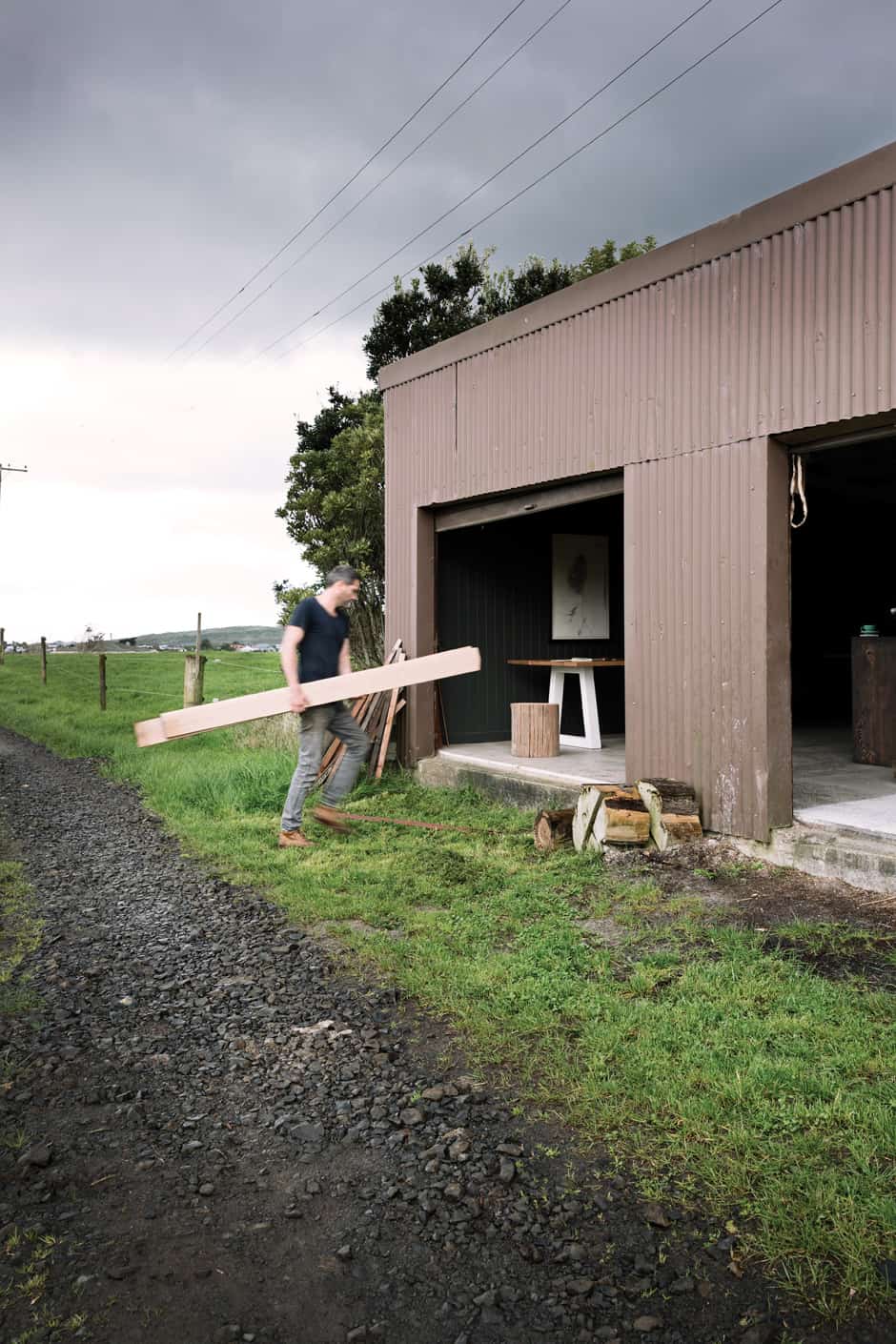

Does your location influence your work? Raglan is such a vibrant little town and definitely helps to keep the creative juices flowing. The farmland the studio is on overlooks the water, so it’s an amazing environment to work in. And we’re able to use a local engineer for the steel work in our products, too.
It’s great to have Auckland less than two hours away; I’m very lucky to have a balance between the two. I usually go to the city for a couple of days a week to get my fix and connect with my work partners, but I do love to get back to the peace of the countryside to knuckle down and get the work done.
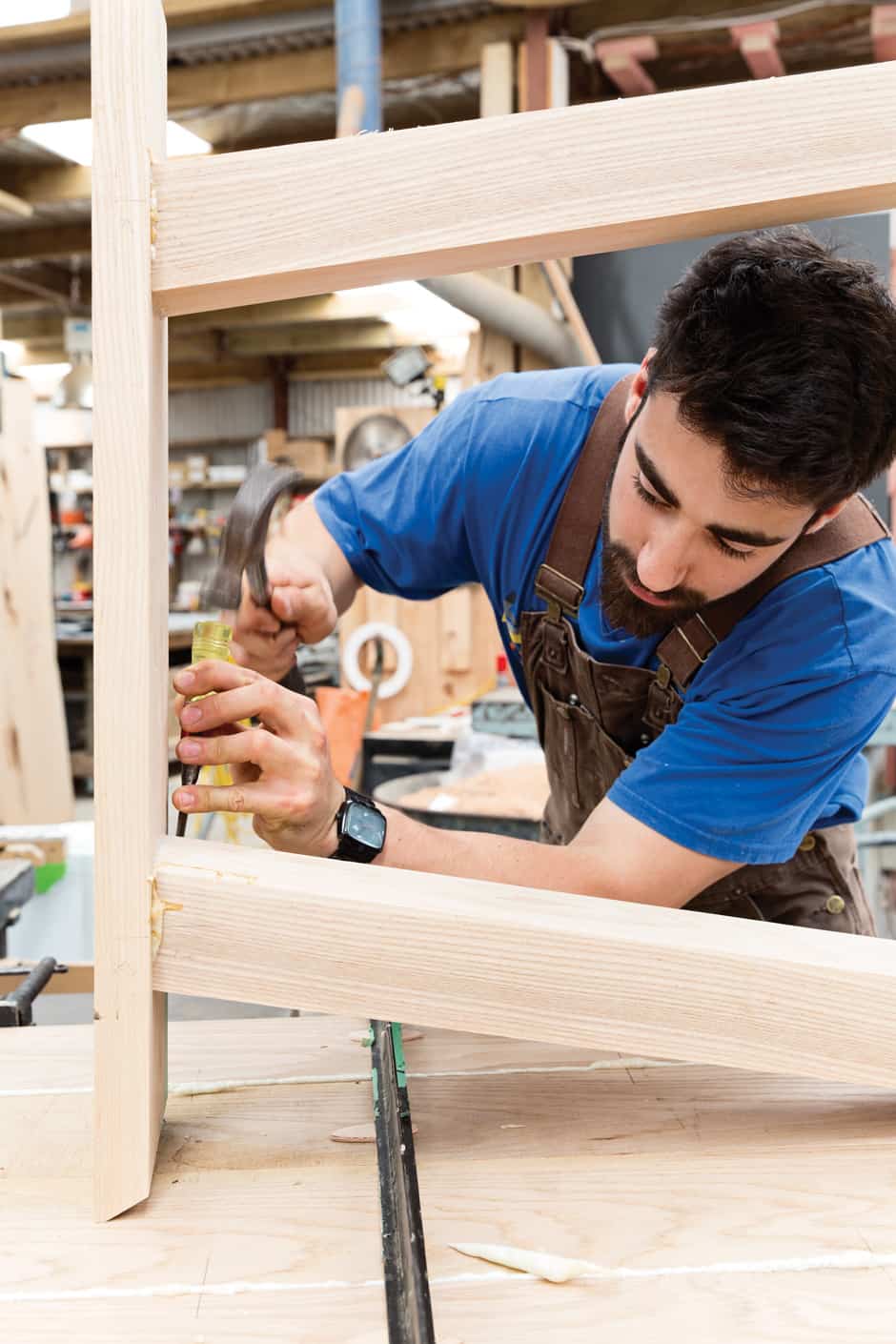
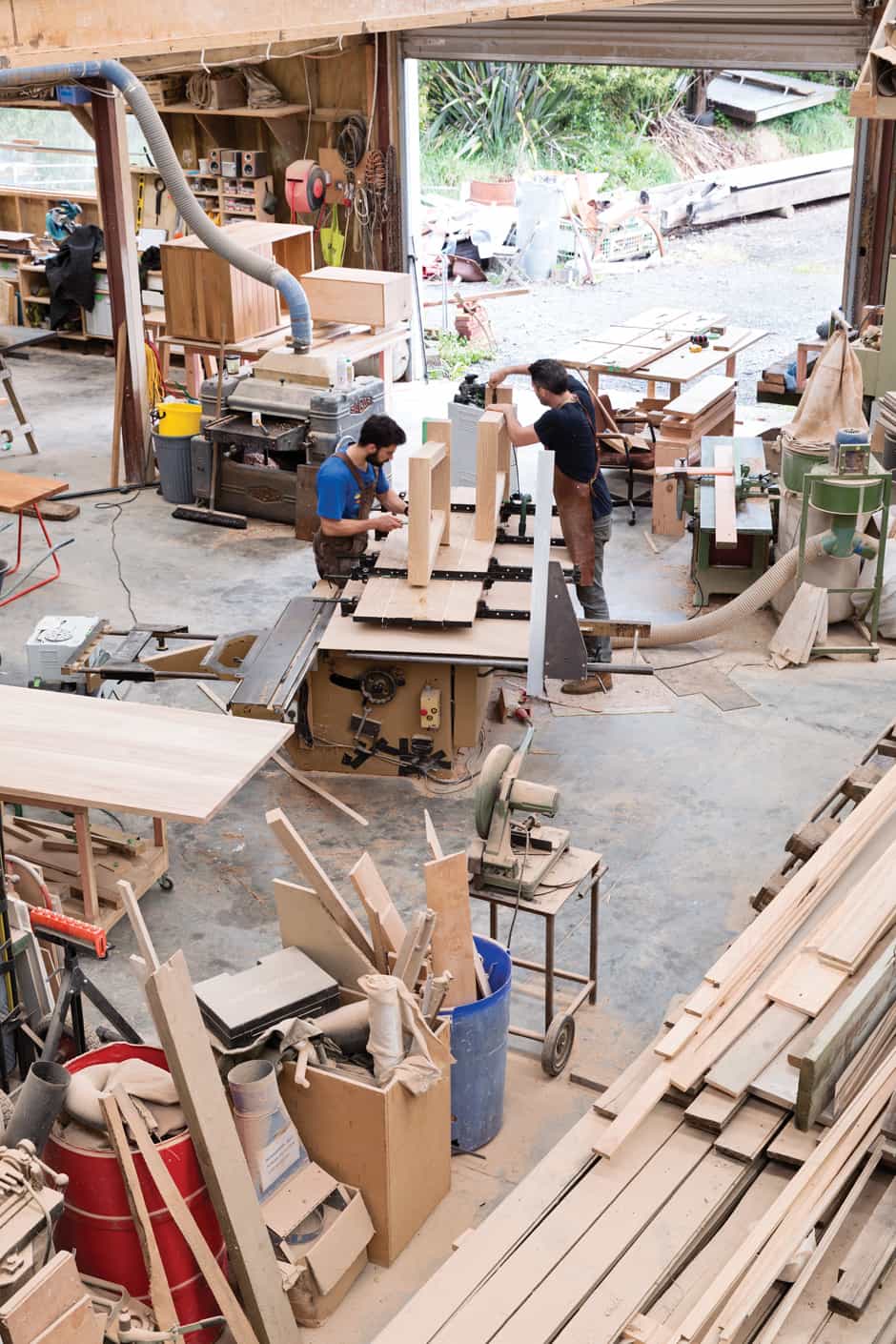
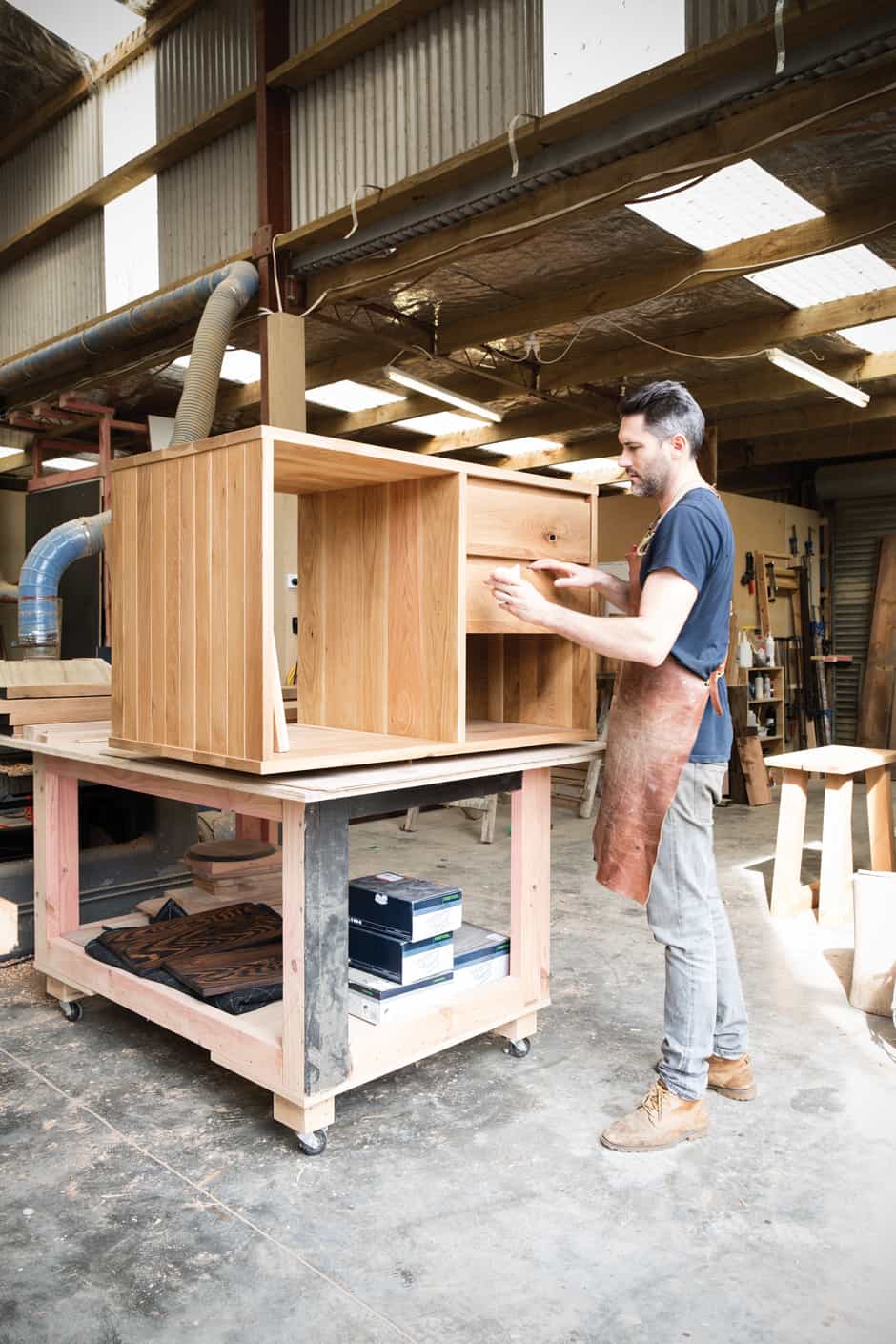
Do you have a daily routine in the workshop? Because my week is split between Raglan and Auckland, my days are a mix. It’s a bit different at the moment with the showroom. I spend Monday and Tuesday in Raglan to ensure everything’s on track in the workshop, then return to Auckland – where I’m based from Wednesday to Sunday – with the newly completed pieces for delivery later in the week.
When I’m in Raglan, it’s all go to ensure I maximise the use of the workshop and my time with Faustin [Duprat, Will’s Paris-trained colleague]. I’m usually up at 6.30am and off to Raglan Roast for my coffee before heading to the workshop nice and early. I’ll have a plan for the day of what needs to be done on the machines, and I’ll get going at around 7am, so I have an uninterrupted run before the other boys get in. It’s a nice way for me to clear my mind of the many tasks of the week and focus on the actual ‘making’ side of things, which I find therapeutic. I guess focusing on just the one task at hand is my form of mindfulness.
I try to grab a walk by the sea or go out on the paddleboard if I can. Then at around 12pm, I’ll leave the boys to it and go back to the office in my studio and clear emails, pay bills and make phone calls. I then head back to the dusty workshop at around 4pm for a catch-up with Faustin and to finish any items that need to be completed before hitting the desk again once I’m home at around 6pm.
When I’m in Auckland, my days usually start in the office – my home in Grey Lynn with my fiancée – then are filled with site meetings, client catch-ups and smaller on-site jobs.
How does your design process work? The aim for us is to create a range of collectable household pieces that are a statement and will last a lifetime. Working with clients, understanding their needs and designing pieces just for them is one the most exciting parts of the process. It’s brilliant to see your idea come to life and how it has evolved.
Designs usually come from an idea I’ve had. I’ll consult with Faustin and he’ll say, “Will, don’t be silly, that won’t work”, or “That’s the best idea you’ve had all year”. When it’s the best idea I’ve had all year, the next step is usually to do a little dance around the room. We’ll then discuss and concept up the design through drawings and reference shots, and then start the making. We refine along the way to ensure we have a perfect product that we’re both happy with.
We love to be challenged and design is such an iterative process and essentially about solving problems. When a new job or project comes up, I’ll often think through many different possible solutions – yet interestingly enough, I often end up going back to my initial idea. Because every piece is essentially a new creation, having confidence in yourself is really important. It’s very easy to overthink things, and you just have to trust your gut instinct, as more often than not, it’s right.
Where do you look for inspiration? Ideas often pop up unexpectedly. I’ll find inspiration for a table leg while I’m out walking and notice the form or angle of a building, which will then trigger a solution to a design problem I’ve been having. I love architecture and interiors, so I’m constantly flicking through magazines and other design resources that stimulate new ideas.
It’s been great to have Faustin join the WRW team recently. He’s a good sounding board and has a great creative mind as well as technical ability, so we work well together. I think it’s important to have another design head to work with; we’ll often start with a crazy idea and end up really simplifying it into something that can work well in real life.
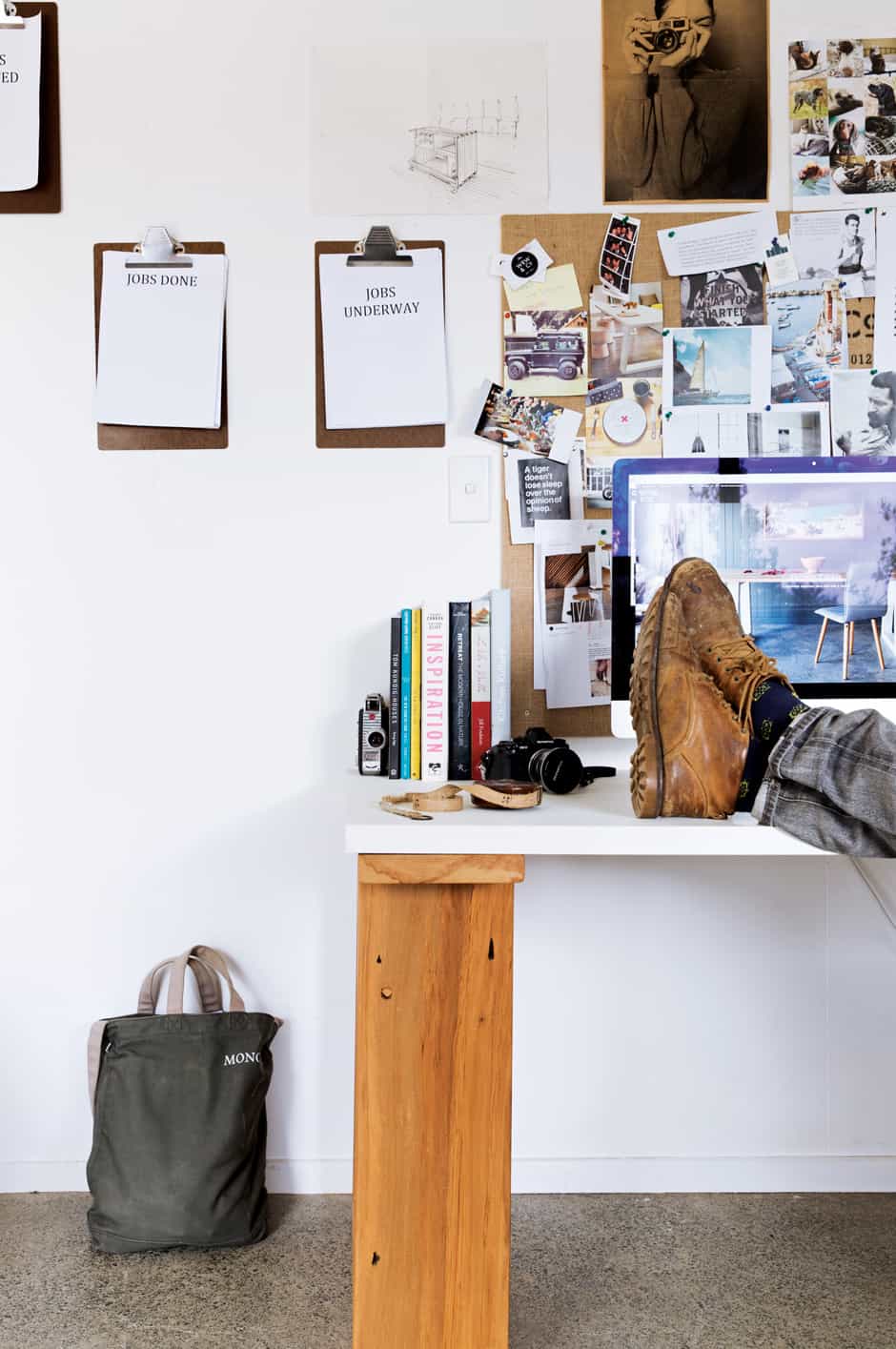

What are you working on right now? We’ve been focusing on creating stock for the pop-up, so that we can showcase our own collection as well as commissioned pieces. To complement my products in the shop, I’ve collaborated with a few cool New Zealand brands: I’m stocking The Foxes Den linens, Felt coasters, Tony Sly pottery, Ottoloom blankets, Ruahine Hides deer hides and The Ivy House and Nodi rugs. I also stock large oak-framed prints of my own photographs.
Do you have a favourite piece? It’d have to be the drinks trolley, which of course has an obvious and very enjoyable use! I love that it harks back to another era and to an occasion that brings people together in a sophisticated way.
Are there any new concepts or designs on the cards? Faustin and I are working on some modular kitchen units that combine steel and solid timber. And we’ve just finished a range of living room entertainment units that mix oak and walnut to give people the opportunity to customise their own. The changeable element has been something I’ve wanted to try out for a while and it’s come together beautifully. We have four options, from small apartment pieces to large family-home units. They really enhance a space and are also very practical – I can’t stop raving about them.
wrw.co.nz
Words Alice Lines
Photography Larnie Nicolson


